Space Cadet
Poet Albert Goldbarth walks us through his space-age toy collection.
WORDS BY T. COLE RACHEL, PHOTOGRAPHY BY SHAWN BRACKBILL
ASKED TO DESCRIBE how it feels when he spends time with his expansive collection of vintage science-fiction toys and objects, 73-year-old poet Albert Goldbarth offers the following: “It's great to come home after a bad day at the office or, say, after a squabble with one's wife — not my wife, of course, who is a saint — or a bad day with the IRS, or your car got a ding, maybe your dentist gave you bad news, and suddenly walk into this future world that says, ‘We're waiting for you just around the corner!’ And it's a world where everything is a wonder. There aren't Seven Wonders of the World here. Everything in this world is a wonder, and that's lovely.”
Though the look and feel of his collection leans hard into the aesthetics of ’50s and ’60s atomic-age science fiction, Goldbarth’s assortment of objects is more about adventure and whimsy than anything else. “These are not space toys that have the look of NASA, filled with ideas of government funding and mathematical formulas that I would never understand if I had five lifetimes to devote to it,” he explains. “Rather, these are just toys that imply a world of pure adventure. They say that you can press a button and suddenly you are anti-gravity flying into a galaxy of total enchantment. I don't think of my spacemen who are holding toy guns, or my collection of ray guns, as really being military armaments so much as a kind of spaceman accessorizing. A ray gun would be handy to have around in case you do meet a bad guy on another planet, of course, but my spacemen are not aggressive. They are not evil colonialists. They are out exploring in a world of pure unadulterated and un-adult joy.”
“l guess I look at collecting the way a poet might. I've only had a limited budget. I've only had limited time. It's sort of like working within the constraints of the sonnet.”
With or without ray guns, Goldbarth’s mammoth toy collection presents a sweetly naive space-age vision of a future that never was — an imagined destiny more expansive, colorful, and generally light-years more fun than the one we’re currently living through. “I don’t mind the word naive as it applies to these objects, because it implies a vision of the future that is much simpler, much sweeter than what we ended up with,” muses Goldbarth. “I've said many times, in many ways and places, these toys suggest the future that the world promised me, and then reneged on.” And as for being an adult toy collector, Goldbarth is expectedly playful. “My wife and I get to be our own children,” he laughs. “And besides, what exactly was a toy? Is a jigsaw puzzle, featuring these spaceships and space guys and ray guns going zap! — is that a toy? Is a bubble-bath container in the shape of a rocket ship a toy? Is a tin of children's watercolors that might have a lithograph of a space scene a toy?”
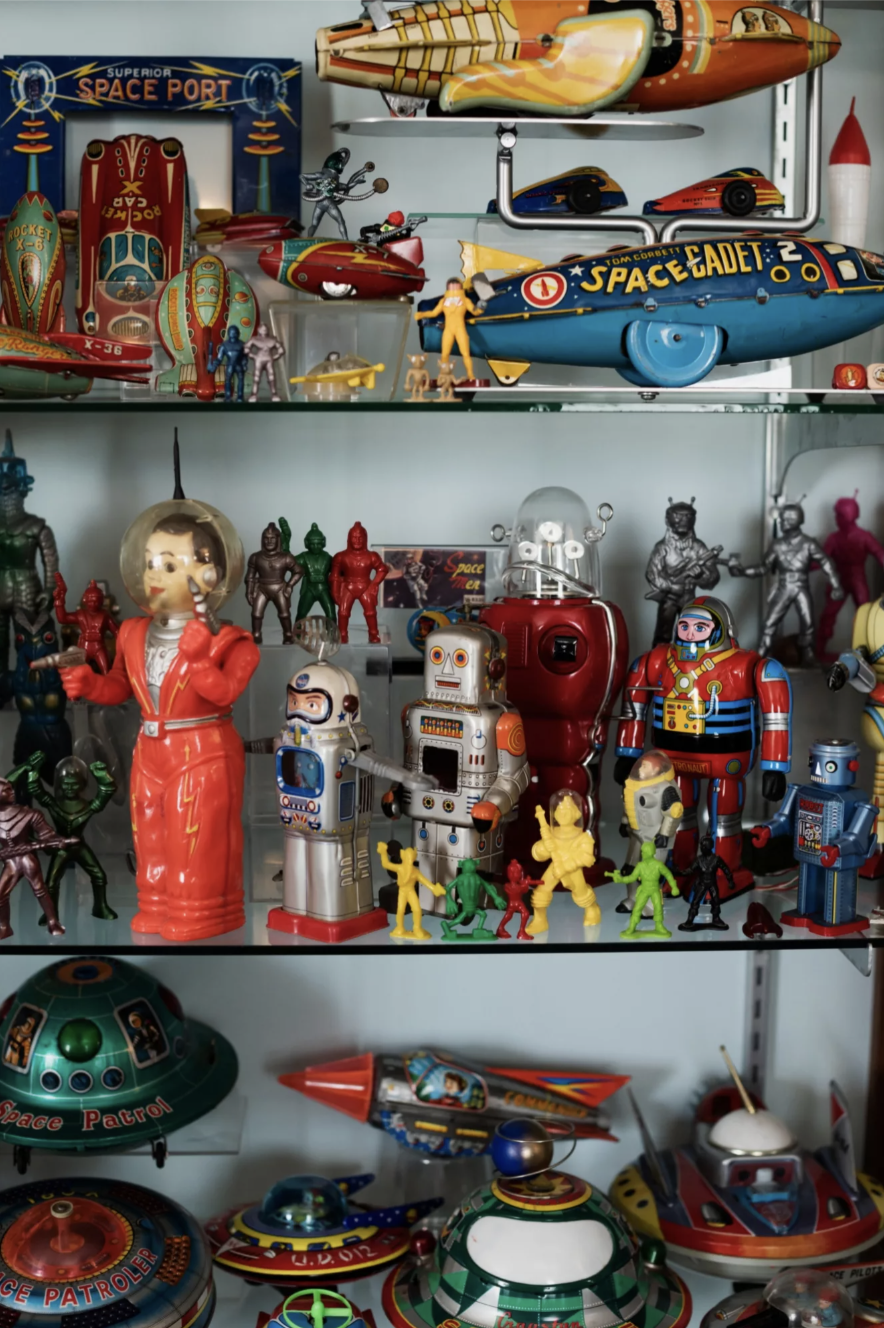
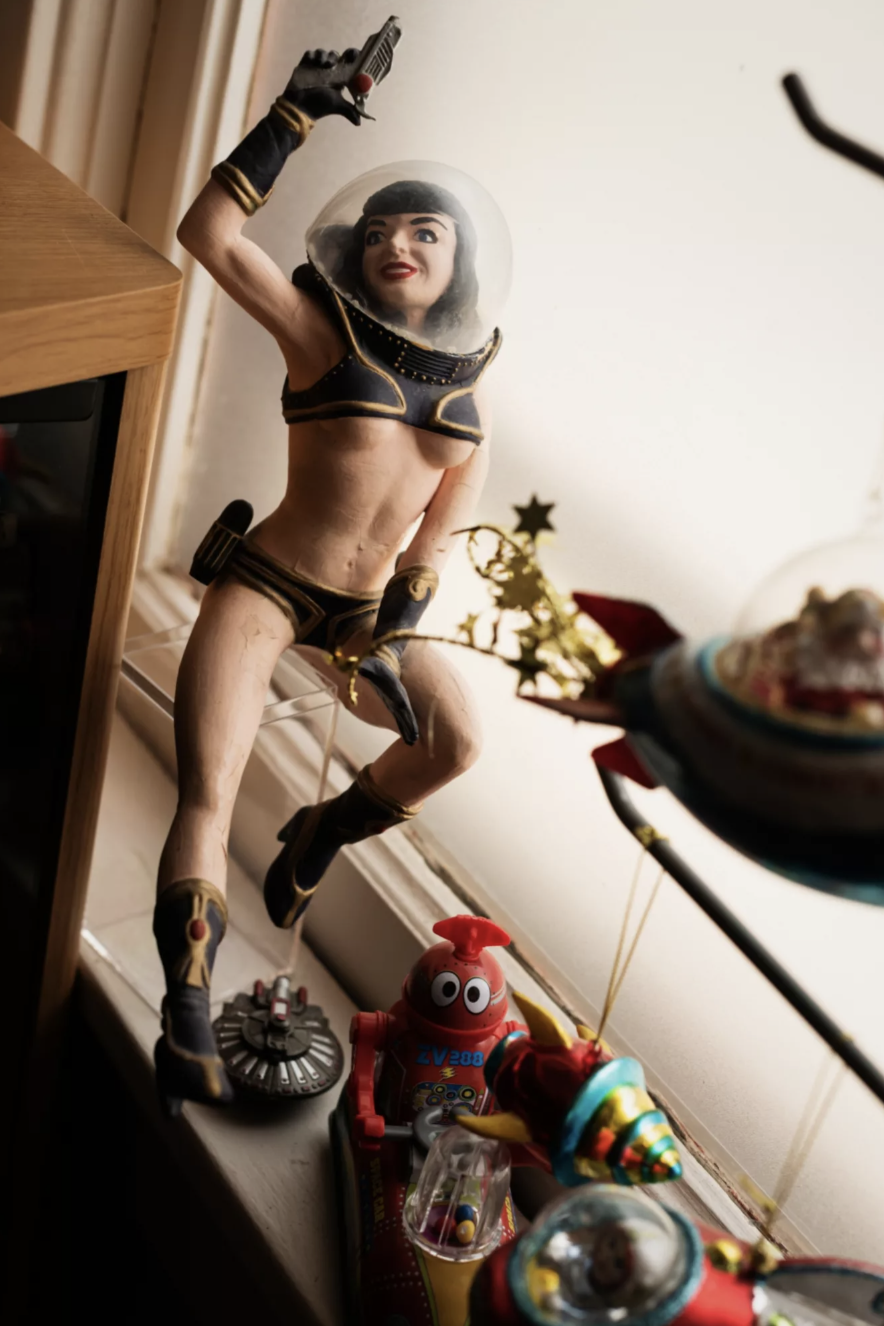
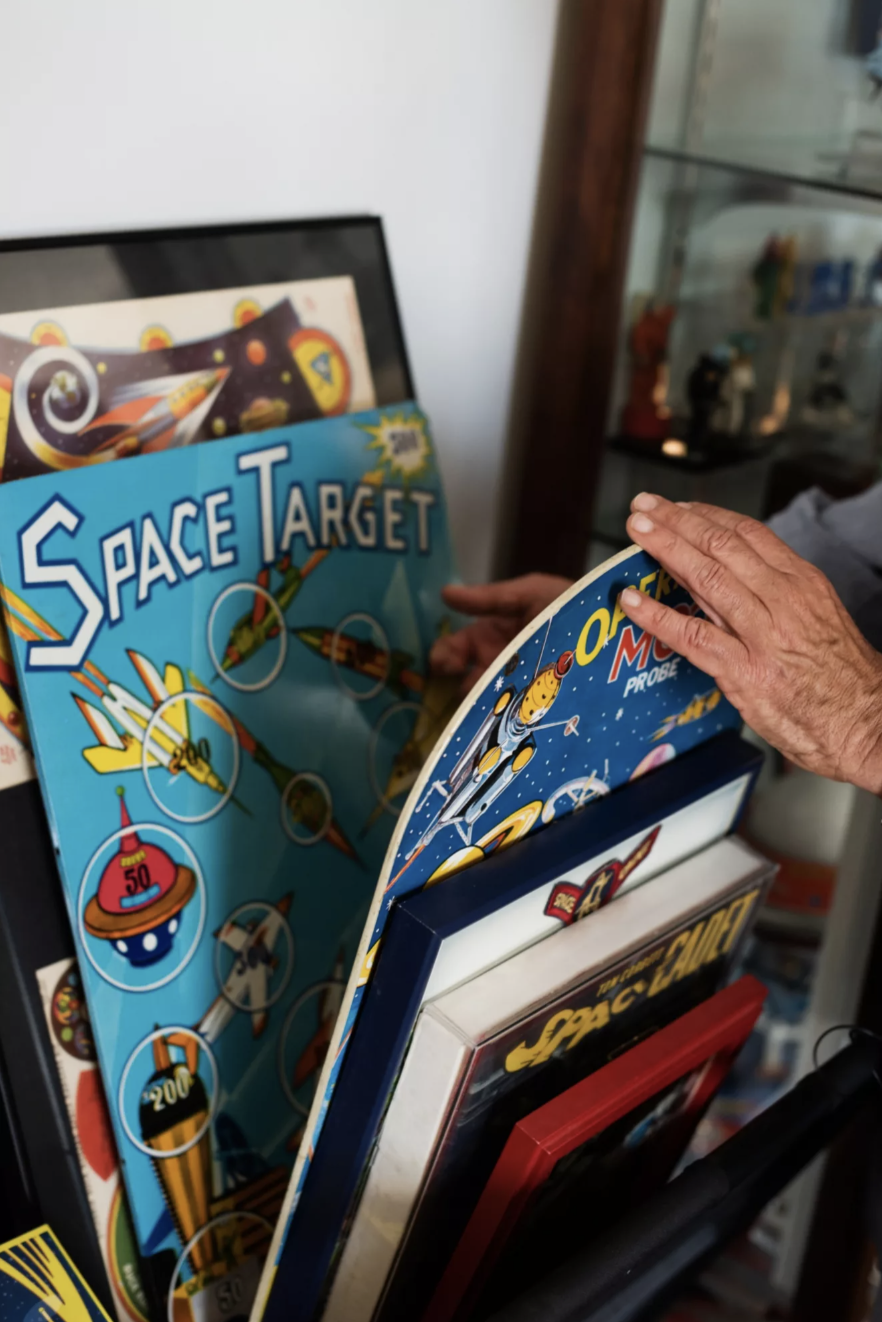
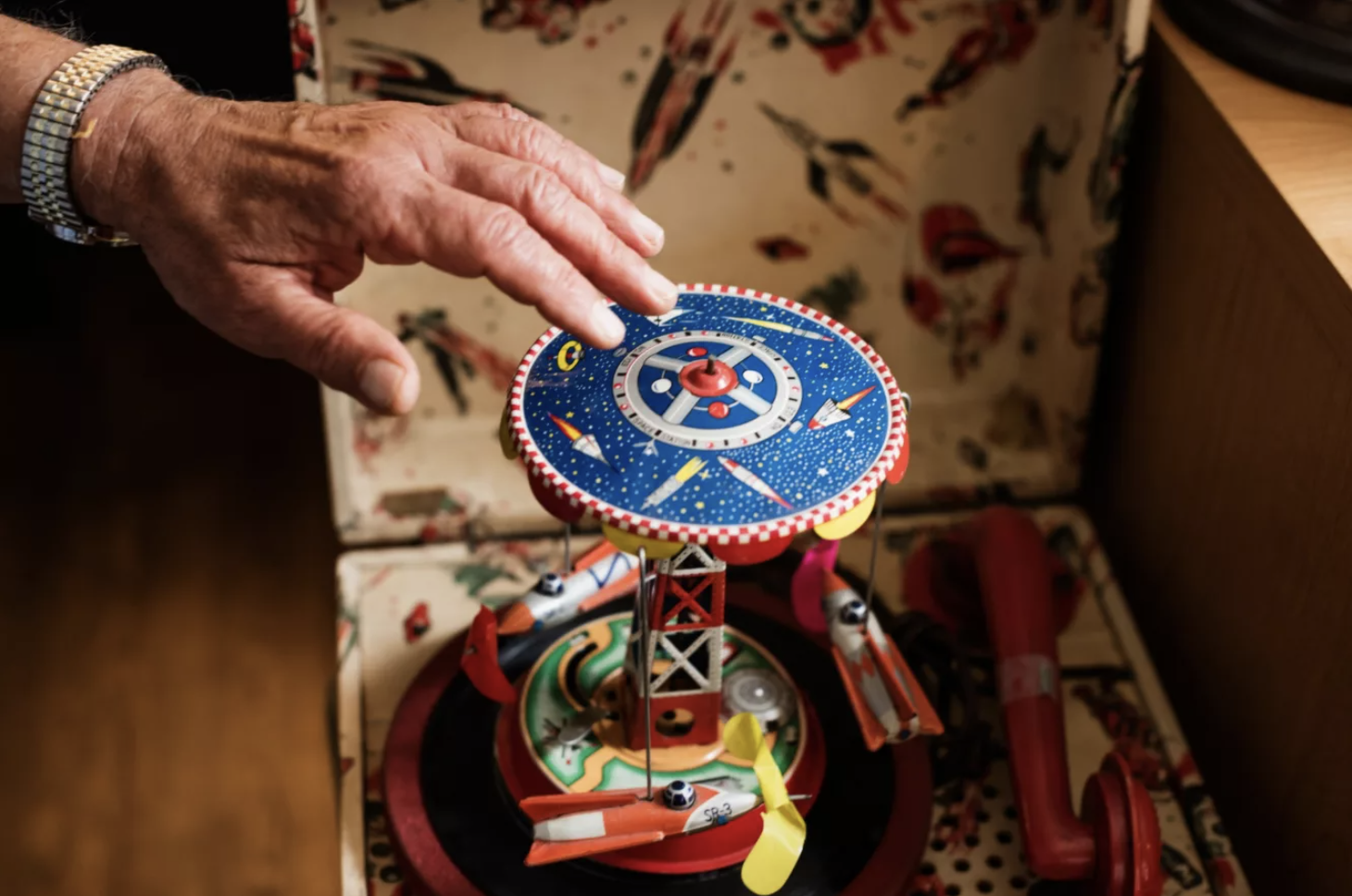
Goldbarth’s museum-worthy collection — a kaleidoscopic array of space toys, posters, pulp paperbacks, comics, and cosmic ephemera — comes from a lifelong passion for the subject matter that he traces all the way back to his childhood. His ever-growing collection, which currently dominates a large chunk of real estate within his Wichita, Kansas, home (“In a normal house, this would be known simply as a dining room.”) is all the more remarkable considering the way it was assembled. Goldbarth, a two-time winner of the National Book Critics Circle Award and the author of over 40 books of poems and essays, has never touched a computer or used the internet, which means his entire collection has been sourced via in-person forays into junk stores, flea markets, antique malls, and curiosity shops around the world.
“My collection is not the most comprehensive in the world,” he explains. “However, I built this collection, while not even thinking of it as a collection, per se. It was just acquiring some amazing thing that makes me happy — one by one by one by one, over many years. I did it while I had a full-time job as an English professor. I did it while giving time to a marriage and to lots of friendships. I also did it completely offline. So there have been a lot of limitations put into place — limitations of time, on energy, of money. I've always kept my eyes open, and I've never said no to something I could afford that had the right look.”
And what exactly is the right look for a cosmic space toy? “On one day it might be a 1934 Buck Rogers toy spaceship that is the first commercial toy spaceship ever made in this country,” Goldbarth explains. “And another day it might be the end flap from the cardboard tube of toothpaste that just happens to have an illustration of a space guy in a bubble helmet or a Martian with crazy wiggling antennae. And I've been just as happy to acquire the little scrap of cardboard torn from a toothpaste tube, as I have this lovely, fairly valuable, and fairly rare Buck Rogers toy. If it's been there and it's right for my universe, I collected it and was happy to have it.”
“l guess I look at collecting the way a poet might. I've only had a limited budget. I've only had limited time. Online purchasing is beyond my aesthetic and my principles. It's sort of like working within the constraints of the sonnet. You are given a form with a specific limitation, and within that limitation, you try to create as much beauty as possible.”
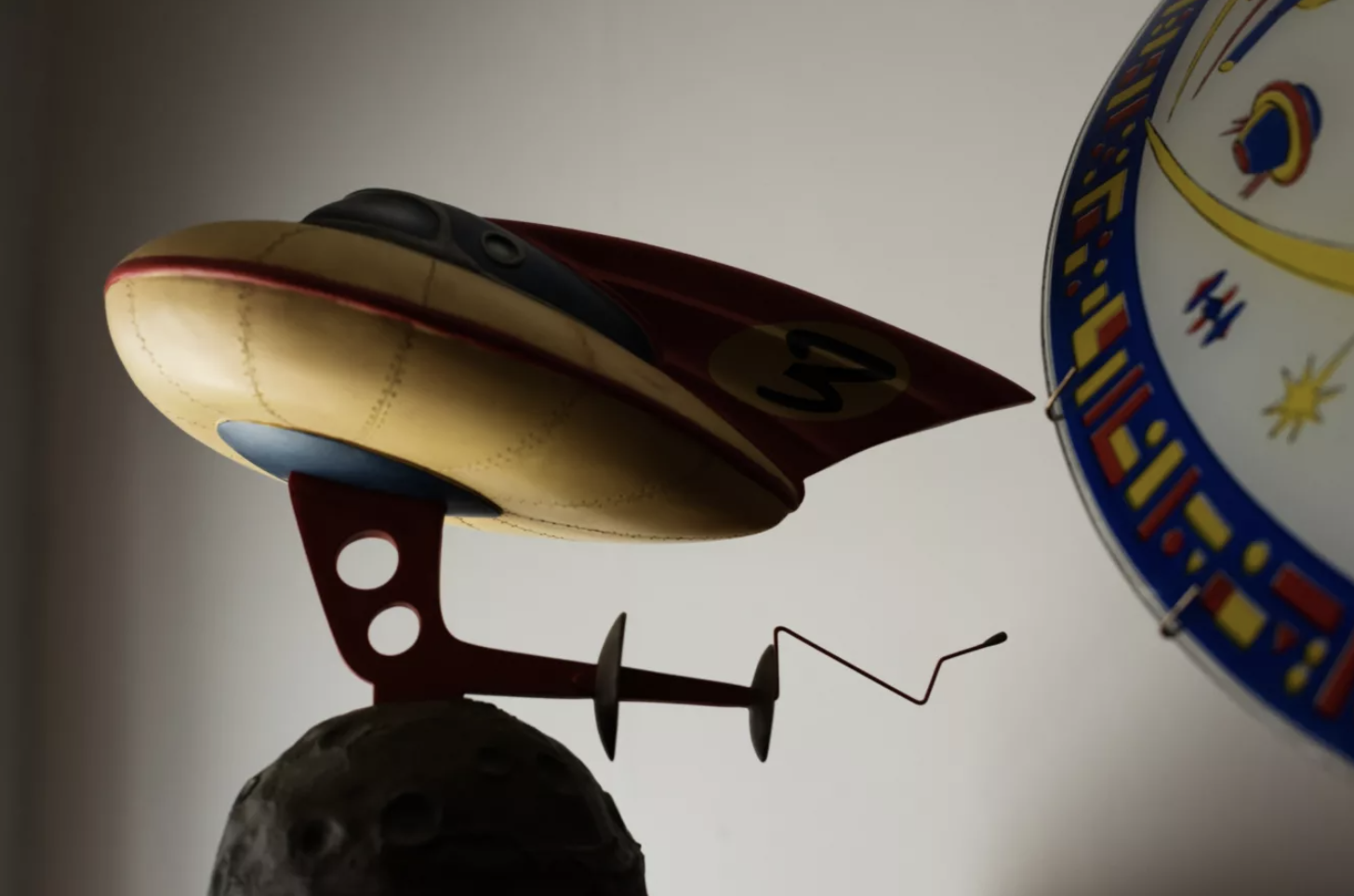
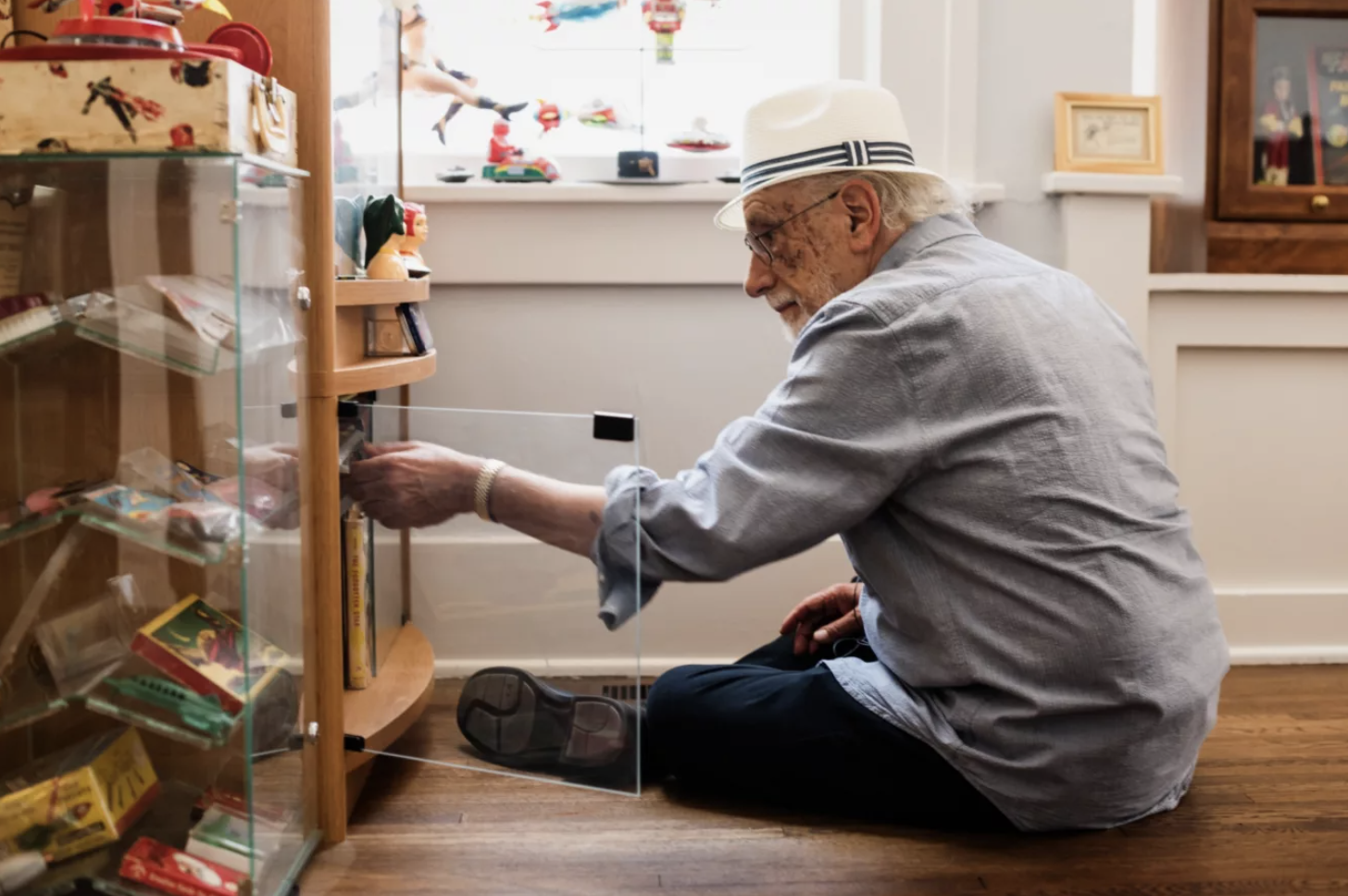
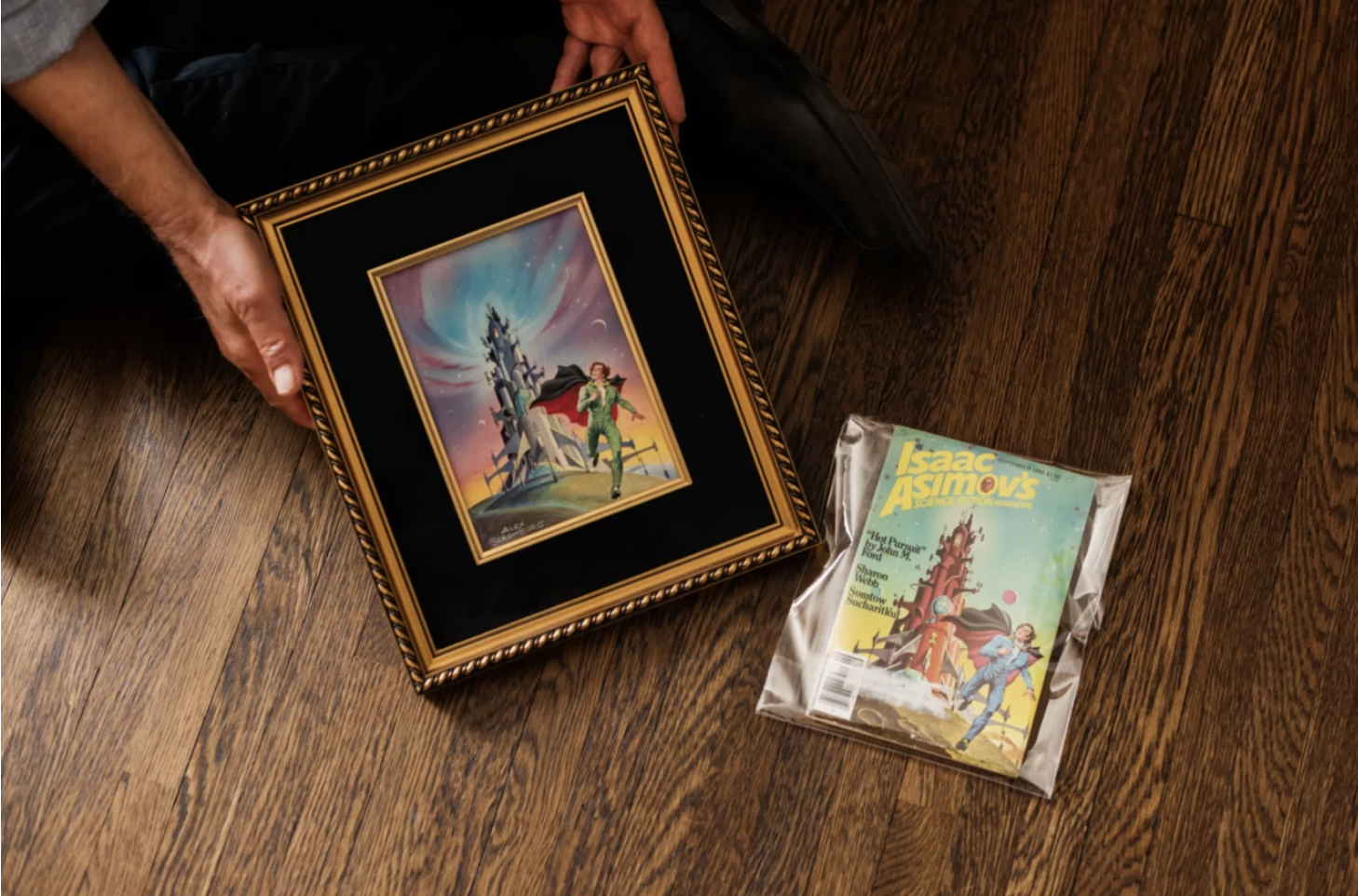
Albert Goldbarth’s new book of poems, “Other Worlds,” is out in November 2021 from the University of Pittsburgh Press, Pitt Poetry Series.


